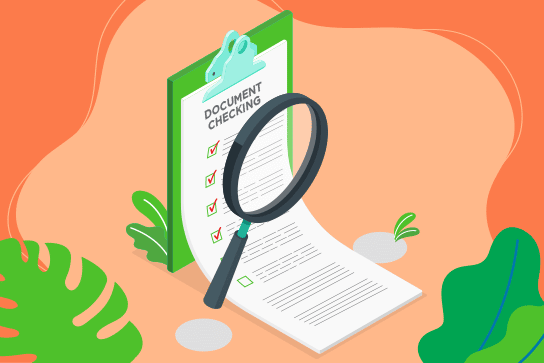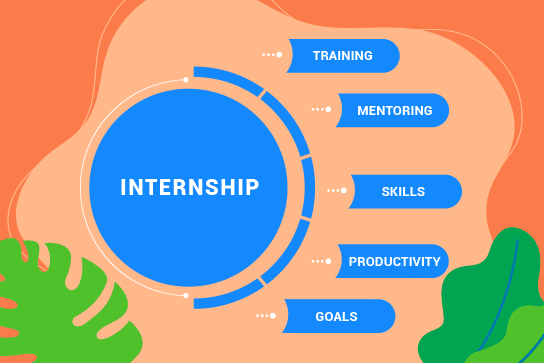LISTEN AUDIO
Last Updated on November 14, 2023 by Ozlinks Education
Qualification Overview
This qualification is intended for stonemasons who work with sandstone, limestone, marble, and other types of stone and stone products to create stone monuments, buildings (both historic and new), and building components such as walls, floors, arches, chimneys, stairs, windows, decorative mouldings, fireplaces, and benchtops.
This certificate allows stonemasons to pursue professions in the manufacturing industry. They also work in fields such as building construction, management, and providing essential services.
Occupational titles may include:
- Architectural stonemason
- Monumental stonemason
- Heritage stonemason
- Bench-top mason
- Stonemason.
Qualification Name
Certificate III in Stonemasonry
Qualification Code
CPC32320
Why do I need this qualification?
Obtaining a Certificate III in Stonemasonry may boost your job prospects and earnings. You could advance to the position of site supervisor or foreman and earn a greater income in Australia.
Migrants and international students may require the Certificate III in Stonemasonry to apply for visas under the Migration Skills Assessment (MSA) program for the occupation ANZSCO: 331112 Stonemason. Please see the link provided below for more information on visa requirements.
- Skilled Employer Sponsored Regional Visa 494
- Skilled Work Regional Subclass 491
- Skilled Nominated Subclass 190
- Temporary Skill Shortage Subclass 482
What does a stonemason do?
Stonemasons are responsible for cutting and shaping blocks of stone so that they can be used as a completed surface or incorporated into constructions. Sandstone, limestone, granite, dolomite, quartzite, and marble are just a few of the varieties of stone that can be used for a variety of purposes. Other types of stone include quartzite and quartz.
Their job involves:
- studying plans and specifications to determine materials required, dimensions and installation procedures.
- erecting and dismantling restricted height scaffolding
- sealing foundations with damp-resistant materials and spreading layers of mortar to serve as base and binder for blocks using trowels.
- laying bricks in rows, designs, and shapes, and spreading mortar between joints.
- embedding blocks in mortar and removing excess mortar.
- checking vertical and horizontal alignment.
- cutting, shaping, and polishing stones and bricks using machines and hand tools, and shaping bricks to fit irregular spaces.
- repairing and maintaining bricks, cement blocks and related structures.
- designing and cutting monumental masonry and lettering.
- constructing walls using stone slabs and large masonry slab blocks.
- cutting, polishing, joining, and installing stone kitchen benchtops.
- may prepare base and bedding course and lay segmental paving.
RPL Certificate III in Stonemasonry
To achieve this qualification, competency must be demonstrated in:
30 units of competency must be completed:
- 21 core units
- 9 elective units, consisting of:
The electives are to be chosen as follows:
- all 8 units within Group A – Heritage, conservation and restoration stonemasonry, or
- all 7 units within Group B – New and contemporary works (building stonemasonry), or
- all 5 units within Group C – Monumental stonemasonry, or
- all 4 units within Group D – Bench-tops
The remaining units can be selected from any elective group or the general electives as long as the units have not previously been selected.
Up to two elective units can be selected from any Training Package or accredited course, as long as they contribute to a valid, industry-supported vocational outcome and support the Australian Qualifications Framework (AQF) level of this qualification.
Note: Units marked with an *asterisk have one or more prerequisites.
Core Units
|
CPCCCA3002* |
Carry out setting out |
|
|
CPCCCM2006 |
Apply basic levelling procedures |
|
|
CPCCCM2008* |
Erect and dismantle restricted height scaffolding |
|
|
CPCCCM2012* |
Work safely at heights |
|
|
CPCCOM1012 |
Work effectively and sustainably in the construction industry |
|
|
CPCCOM1013 |
Plan and organise work |
|
|
CPCCOM1014 |
Conduct workplace communication |
|
|
CPCCOM1015 |
Carry out measurements and calculations |
|
|
CPCCOM2001* |
Read and interpret plans and specifications |
|
|
CPCCST2003* |
Finish stone |
|
|
CPCCST2004* |
Lay stone |
|
|
CPCCST2006* |
Identify and use stone products |
|
|
CPCCST2007* |
Use stonemasonry tools, plant and equipment |
|
|
CPCCST3001* |
Dress and mould stone |
|
|
CPCCST3002* |
Shape solid stone |
|
|
CPCCST3003* |
Split stone manually |
|
|
CPCCST3004* |
Dress stone manually |
|
|
CPCCST3006* |
Machine stone |
|
|
CPCCST3010* |
Set out and cut letters in stone |
|
|
CPCCST3022* |
Carry out profile work |
|
|
CPCCWHS2001 |
Apply WHS requirements, policies and procedures in the construction industry |
|
Elective Units
Group A – Architectural heritage, conservation and restoration stonemasonry
|
CPCCBL3016* |
Construct battered masonry walls and piers |
|
|
CPCCBL3017* |
Carry out tuck pointing and repointing to masonry |
|
|
CPCCST3017* |
Construct stone arches |
|
|
CPCCST3019* |
Lay stonemasonry stairs |
|
|
CPCCST3021* |
Restore stone work |
|
|
CPCCST3023 |
Apply drawing principles to stonemasonry |
|
|
CPCCST3024* |
Apply conservation principles and practices to heritage stonework |
|
|
CPCCST3025* |
Carry out basic stonemasonry demolition |
|
Group B – Architectural new and contemporary works
|
CPCCBL3016* |
Construct battered masonry walls and piers |
|
|
CPCCPA3001* |
Prepare subgrade, base and bedding course for segmental paving |
|
|
CPCCST3012* |
Build stone veneer walls |
|
|
CPCCST3016* |
Build solid stonemasonry walls |
|
|
CPCCST3017* |
Construct stone arches |
|
|
CPCCST3019* |
Lay stonemasonry stairs |
|
|
CPCCST3020* |
Produce reconstituted stone |
|
Group C – Monumental
|
CPCCCM2002* |
Carry out hand excavation |
|
|
CPCCST3011* |
Plan monument construction |
|
|
CPCCST3013* |
Carry out cemetery monument fixing |
|
|
CPCCST3015* |
Apply gilding to stone |
|
|
CPCCST3018* |
Inlay lead to stone |
|
Group D Bench-Tops
|
CPCCCM2005* |
Use construction tools and equipment |
|
|
CPCCJN2001* |
Assemble components |
|
|
CPCCJN2003* |
Package manufactured products for transport |
|
|
CPCCST3009* |
Use computer-controlled static machinery to produce stone components |
|
General Elective Units
|
BSBESB301 |
Investigate business opportunities |
|
|
BSBESB407 |
Manage finances for new business ventures |
|
|
CPCCCO2013* |
Carry out concreting to simple forms |
|
|
CPCCPA3002* |
Lay segmental paving |
|
|
CPCCPA3003* |
Cut segmental paving |
|
|
CPCCSC2002* |
Erect and dismantle basic scaffolding |
|
|
CPCCST2001* |
Prepare for stonemasonry construction process |
|
|
CPCCST2005* |
Carry out load slinging of off-site materials |
|
|
CPCCST3007* |
Turn stone |
|
|
CPCCST3009* |
Use computer-controlled static machinery to produce stone components |
|
|
CPCCST3014* |
Set and anchor stone facades |
|
|
CPCCST3016* |
Build solid stonemasonry walls |
|
|
CPCCST4001 |
Prepare to undertake the heritage restoration process |
|
|
CPCCST4002 |
Undertake the heritage restoration process |
|
|
CPCCST4003 |
Undertake preparations for refractory works |
|
|
CPCCST4004 |
Initiate the heritage works process |
|
|
CPCCST4005 |
Prepare drawings for heritage works |
|
|
CPCCST4006 |
Prepare report for heritage restoration work |
|
|
CPCCST4007 |
Construct a fire brick wall and arch using refractory materials |
|
|
CPCSIL2001* |
Use and maintain respiratory protective equipment |
|
|
CPCSIL3001* |
Work with products and materials containing crystalline silica |
|
What RPL qualification are you looking for?
To improve your chances of landing a high-paying job in the Australian job market, consider evaluating your skills and having them formally recognised. You can apply for skills certification through the recognition of prior learning process if you are a skilled worker or an international student migrant living in Australia with recent job experience. Choose the qualification that best meets your needs and circumstances from the list below. Get your skills check here.
Building and construction is a significant industry that offers employment opportunities to both men and women in a wide variety of professions, such as joiners, carpenters, wall and floor tiler, solid plasterer, roof plumber, and general plumber. The building and construction refer to the manufacturing and commercial sector of the industrial sector that is concerned with the building, repairing, renovating, and maintaining of infrastructures.
Certificate III in Joinery
Carpenters are responsible for the construction, erection, and repair of buildings and other structures made of timber, substitutes for timber, and other materials. Carpenters may also construct concrete framework and repair existing fittings.
Qualification Code
CPC30220
More DetailThe RPL process is done in 3 simple steps.
The RPL pathway consists of three stages and typically takes between six and eight weeks to complete from the time an applicant applies to an RPL assessment institute.
Register / Enrolment
Step 1: During the enrolment stage, you will have to demonstrate your skill level in relation to your chosen qualification by completing a self-assessment related to the required skills and knowledge to determine the relevance of the RPL pathway.
Assessment/ Evidence Review
Step 2: The RPL assessor will give you tests in the subjects of your applied qualification to find out what skills you have and match them to the skills needed to work in the industry and for the qualification you have chosen.
You will need to provide proof of the necessary documents, photos, and videos to show that you know how each subject in your qualification.
Result
Step 3: If you meet all units of competency under the qualification, you will be issued with a Certificate and Statement of Results.
Frequently Asked Questions
Below is a list of questions that our customers often ask us. If you need more information, don't hesitate to contact Ozlinks Education now.
The RPL is generally a faster way to an Australian qualification than completing a formal training course because it recognizes your previous work experience.
Yes. The RPL evaluation process is just as thorough as any other evaluation. But the evidence you need to show may be different from what is usually asked in a class assessment.
When the criteria for each of the subjects are met, a degree may be partially or fully accredited. For example, only completed subjects can be counted towards the qualification.
Even if your credits aren't enough to qualify, you can still receive written certification of the courses you've completed.
This will depend on the complexity of your qualification, how many subjects you apply for and how long it takes you to gather proof of work experience, collate and submit proof. Usually, the RPL process is 6 to 8 weeks from the date of application to the RPL assessment institute and also depends on your industry and qualifications.




